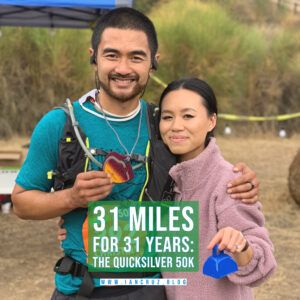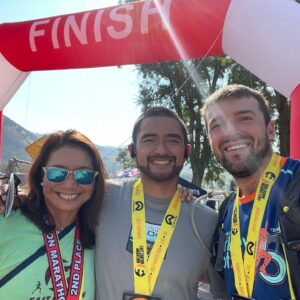
Race Report: New York Marathon (2022)
Thoughts from my experience running the New York marathon!

Thoughts from my experience running the New York marathon!

2022: Reflecting on the year so far and balancing between boxing, running, nutrition, health – and now real estate investing.

I dive into my overall experience of the Big Chief 50K, and:
• My experience with COVID in training
• How I used live-time CGM data to make fueling decisions
• How the elevation impacted me and the ideal time to acclimate to elevation
• All the rookie mistakes I made this time around
• My overall experience from the Big Chief 50k!

Over my birthday weekend, I continued my annual tradition of celebrating my birthday running a race. This year, I ran the Quicksilver 50K to celebrate my 31st birthday. In my race recap, I write about the following:
• A conversation with the 100K overall winner, Ryan Ung, who also worked for Supersapiens and wears a continuous glucose monitor during races
• My insights running with the Supersapiens CGM app
• The 100K 1st place finishers glucose strategy for racing (i.e. his minimum baseline for glucose)
• Why most food supplied at races are junk (i.e. M&Ms, Cinnamon rolls, Snickers, Cookies, etc.), and what food sources I chose at the aid station (Sweet Potato, Banana, That’s It! Bar, Nuts, Seeds, etc.)
• Why I chose Spring Sports Nutrition Gels to power my race, in addition to HVMN ketone esters
• How a late-night game two nights prior impacted performance
• How long I plan to continue to running my age in years
• The camaraderie of running
Congrats to Jenn, Christine, and Jaymin for completing their 100K!

Each marathon that you run is an entirely different experience. I’m always experimenting and learning more about myself, my limits, and my body during races. I dive into my experience running the East Canyon Marathon, and a few other topics below in my blog post:
• How fueling both with UCAN gels and HVMN Ketone Esters helped me feel strong for the race
• Why training miles matter, and why they don’t
• Running in poor air: My decision to run wearing a KN95 mask
• PurpleAir vs AirNow and my AQI threshold for not running outside
• Why I carbo-loaded for this race
• The diminishing returns of fueling
• Muscle imbalances, possibly due to boxing
• The fluid nature of goal setting during marathons
The ideal cadence for running

I dive into my overall experience of the Big Chief 50K, and:
• Why athletes like Eliud Kipchoge are using glucose monitors to prepare for races
• The best time to fuel during your race (hint: it’s not pre-race as that and the onset of exercise causes a blood sugar crash immediately)
• How my glucose monitor impacted my fueling and race strategy
• Two startups (Levels Health and Supersapiens) and their differing philosophies for maintaining healthy blood sugar levels
• Why I stay away from most gels and how the steady glucose impact of UCAN gels helped my performance
• How the elevation impacted me and how I used my (surprising) heart-rate data to determine my pacing [cont.]

My fastest marathon didn’t coincide with the typical training story of having the most logged miles and vigorous training leading up to race day. Heading into the Mountains 2 Beach marathon, I had been averaging about 20 miles per week, but had sufficient cross training to feel comfortable with my aerobic capacity to be able to run the marathon. My marathon race strategy seemed a little unconventional – to pace myself for the first half according to the highest pace at which I could maintain nasal breathing.

Running 30 Miles for my 30th Birthday (RACE REPORT)

I ran the Big SURreal 21 Miler this weekend. This was a great training run and a chance to experiment with fueling and my CGM data.

In 2019, I ran 3 marathons and my first ultramarathon. I cut down my training hours/miles heavily this year to keep other life priorities in
On Sunday, I ran the Mountains 2 Beach marathon in Ventura. It was a course meant for a BQ/PR, but my goal was a sub

Finally, I take HVMN ketone esters as a direct source of ketones that I can take while also consuming carbs. A typical keto diet is so strict on restricting carbs because carbs trigger an insulin release, which stops fat burning. Then begins the carb cravings, sugar addiction/crashes, and, over the long term, insulin resistance. So a typical keto diet, as originally prescribed as a medical treatment, has people consuming next to no carbohydrates to force the body into ketosis.